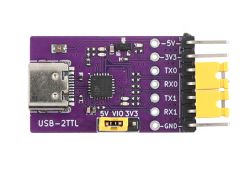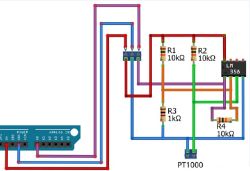Hello to all forumers,
I've recently been thinking about buying some home automation components for my flat. I'm primarily concerned with lighting control and thermostats. Additionally, I have an automatic hoover and a xiaomi fan. In the future, I want to buy an air purifier and a humidifier. I would like all devices to be easy to operate, preferably with one application (2 users).
Moving on to the core of the problem. I have found TUYA thermostatic heads - 3 heads: MOES (TS0601) on zigbee 3.0
and gateway: Gateway ZigBee Z2 Tuya Smart Life
Regarding the lighting (I am green so if anything is not clear I will try to describe more precisely) I would like to control the following lamps:
- in the living room (connected to one double switch) the main lamp and additional led lighting
- in the kitchen (also double switch) - lighting in the kitchen and lighting above the table
I am keen to be able to dim the leds, which are far too bright, so I found such a module: QS-Zigbee-D02-TRIAC-2C-LN
and for the kitchen one without a dimmer: QS-Zigbee-S04-2C-LN
Now the questions:
- will I be able to connect everything under one gateway and easily control e.g. google assistant and google home?
- do i understand correctly that i need modules marked "2-gang" to connect to the double switch?
- Will everything work through the gateway over zigbee? I would not like to overload the wifi.
- Should I include anything else in the planned changes? Is there anything I should be aware of?
I would also add that this is a new build so from what I have read there should normally be "N" in the sockets.
Thank you all in advance for your help!
Kamil
PS. Unfortunately I am a new user and am not able to insert direct links so I have only included the model names.
I've recently been thinking about buying some home automation components for my flat. I'm primarily concerned with lighting control and thermostats. Additionally, I have an automatic hoover and a xiaomi fan. In the future, I want to buy an air purifier and a humidifier. I would like all devices to be easy to operate, preferably with one application (2 users).
Moving on to the core of the problem. I have found TUYA thermostatic heads - 3 heads: MOES (TS0601) on zigbee 3.0
and gateway: Gateway ZigBee Z2 Tuya Smart Life
Regarding the lighting (I am green so if anything is not clear I will try to describe more precisely) I would like to control the following lamps:
- in the living room (connected to one double switch) the main lamp and additional led lighting
- in the kitchen (also double switch) - lighting in the kitchen and lighting above the table
I am keen to be able to dim the leds, which are far too bright, so I found such a module: QS-Zigbee-D02-TRIAC-2C-LN
and for the kitchen one without a dimmer: QS-Zigbee-S04-2C-LN
Now the questions:
- will I be able to connect everything under one gateway and easily control e.g. google assistant and google home?
- do i understand correctly that i need modules marked "2-gang" to connect to the double switch?
- Will everything work through the gateway over zigbee? I would not like to overload the wifi.
- Should I include anything else in the planned changes? Is there anything I should be aware of?
I would also add that this is a new build so from what I have read there should normally be "N" in the sockets.
Thank you all in advance for your help!
Kamil
PS. Unfortunately I am a new user and am not able to insert direct links so I have only included the model names.




